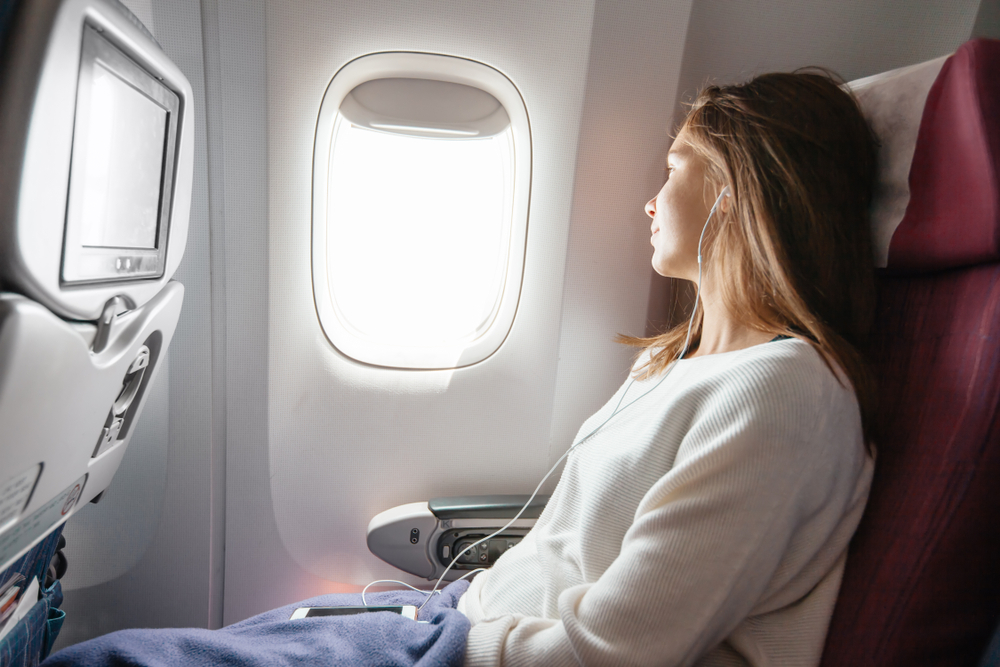- Air travel can cause skin issues, such as sun damage, increased oil production and puffiness.
- Skin hydration and protection are top priorities for air travel as aircraft cabins typically have much lower humidity levels than skin is accustomed to.
- Cleansing and moisturizing products can help purify and lock in moisture, while habits such as good sleep and water consumption can promote overall skin health.
The combination of recirculated cabin air, high altitude and UV ray exposure can result in major skin turbulence. Many air travelers deal with dry, puffy or aggravated skin, but the right travel skin-care routine can help you arrive at your destination with glowing skin.
Read below to learn about the products and strategies to take care of your skin before, during and after your flight.
How Does Traveling Affect Your Skin?
Skin is most comfortable with humidity levels between 40% and 70%. When cruising 30,000 feet high, your skin is exposed to aircraft humidity levels averaging around 20%, meaning your skin may experience a significant dip in hydration levels as well as dryness, flakiness and irritation.
Other effects of air travel include:
- Puffy eyes: Inactivity and salty airplane snacks can cause water retention and puffiness.
- Excessive oil: Low humidity is correlated to increased oil production in your skin.
- Chapped lips: Arid aircraft cabins dry out mucus membranes of your mouth, nose and eyes.
- Sun damage: UV rays are more intense at higher altitudes.
- Dull complexion: Pressurized aircraft cabins can lead to reduced oxygen and blood flow in the skin.
 Shutterstock/Alena Ozerova
Shutterstock/Alena OzerovaPreflight Cleanse
Clean skin is the best prep before a flight. When combined with air travel, makeup, dirt and other debris can make it difficult for your skin to maintain a healthy balance and may result in clogged pores.
Before your flight, use a gentle cleansing wipe to remove any surface-level dirt. Double cleanse by using a light and hydrating cleanser, and avoid any over-exfoliating or harsh cleansers.
Top gentle cleansers and face washes include:
- CeraVe Hydrating Facial Cleanser
- Dr. Jart+’s Cicapair Tiger Grass Enzyme Foam Cleanser
- PanOxyl 4% Acne Creamy Wash
- Paula’s Choice Omega+ Complex Cleansing Balm
 Shutterstock/popcorner
Shutterstock/popcornerMoisturize and Balance
Help your skin stay balanced and protected by sealing in hydration with a creamy moisturizer. If you need to wear makeup during your flight, mix your foundation or other skin makeup with moisturizer.
Preflight serums and face masks can also boost your skin’s hydration by penetrating skin more deeply. Serums enriched with hyaluronic acid, vitamin C and other antioxidants can help improve skin cell turnover and protect your skin from environmental pollution. Look for face masks that include these ingredients as well as extra-nourishing products, such as olive oil, honey, aloe and jojoba oil.
 itakdalee
itakdaleeTopical Probiotic
Studies show that skin responds to probiotics in a manner similar to that of the gut, with cases demonstrating that topically applied lactic acid bacterium increases skin ceramides, which help moisturize and strengthen the skin barrier and protect it from environmental aggressors. As such, topical probiotic skin treatments can help keep inflammation under control and promote hydration and radiance.
Skin care products infused with probiotics include:
- Biossance Squalane + Probiotic Gel Moisturizer
- Elemis Dynamic Resurfacing Facial Pads
- Tom’s of Maine Prebiotic Bar Soap
- Manyo Factory Bifida Complex Ampoule
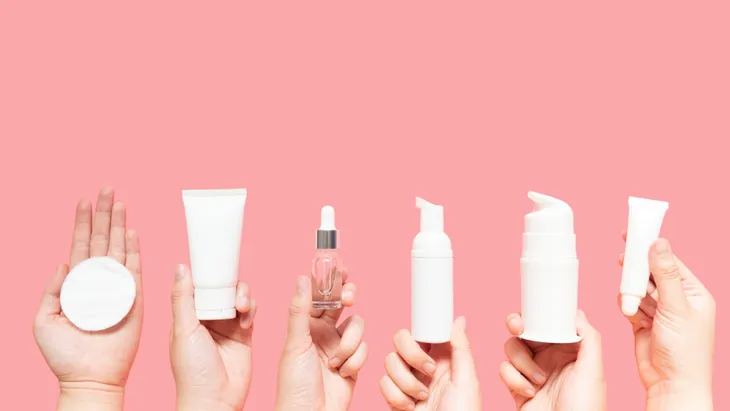 Shutterstock/Orawan Pattarawimonchai
Shutterstock/Orawan PattarawimonchaiSunscreen
Applying sunscreen is a necessary step in your daily skin routine, but it’s even more important during flights. With lower oxygen levels and closer physical proximity to the sun at higher altitudes, UV rays can be up to twice as strong at 30,000 feet as they are on the ground.
Look for sunscreens and other products, such as moisturizers, lip balms and hand creams, that contain at least0 SPF 30. Apply them as you board your flight, and touch up applications during longer flights. You can also help control your UV ray exposure by closing nearby cabin window shades.
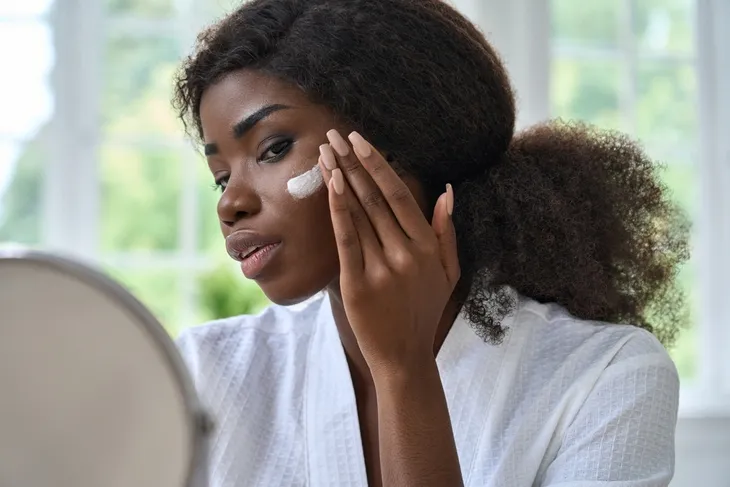 Shutterstock/Ground Picture
Shutterstock/Ground PictureApply Face Oil
Moisturizers, mists and face masks are generally less effective during flights as the low cabin humidity means that these products may actually pull moisture from your skin instead of the air. Excessive misting with water can also interfere with your skin’s pH level and cause additional drying.
High-potency face oils are an in-flight alternative to moisturizers that can help keep your skin hydrated. Look for oils that contain essential fatty acids and vitamins A, E, D and K as well as calming and hydrating essential oils.
Apply face oil every 3 hours, but keep in mind that it may interfere with the potency of your products containing sunscreen. Prioritize sunscreen over face oil during daytime flights, and save face oil for long or nighttime flights.
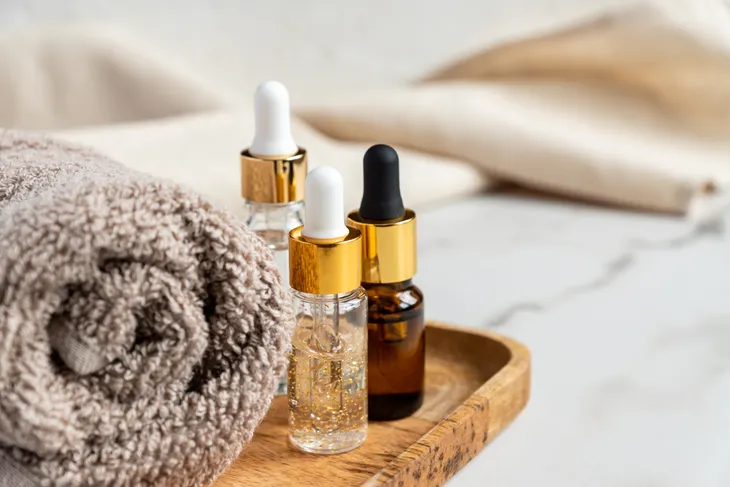 Shutterstock/Irina Kvyatkovskaya
Shutterstock/Irina KvyatkovskayaStay Hydrated
While moisturizers and other skin products are helpful, drinking enough water is key to hydrated skin while flying. Drinking extra water keeps your internal skin cells hydrated and healthy and doesn’t necessarily affect skin hydration directly if you’re already getting enough, but dehydration is linked to more noticeable appearances of lines and wrinkles.
Make good hydration a part of your daily routine before your flight, and pack a water bottle to bring during travel. Diuretics, such as coffee and tea, may contribute to dehydration, but enjoying coconut water mid-flight can help boost your hydration.
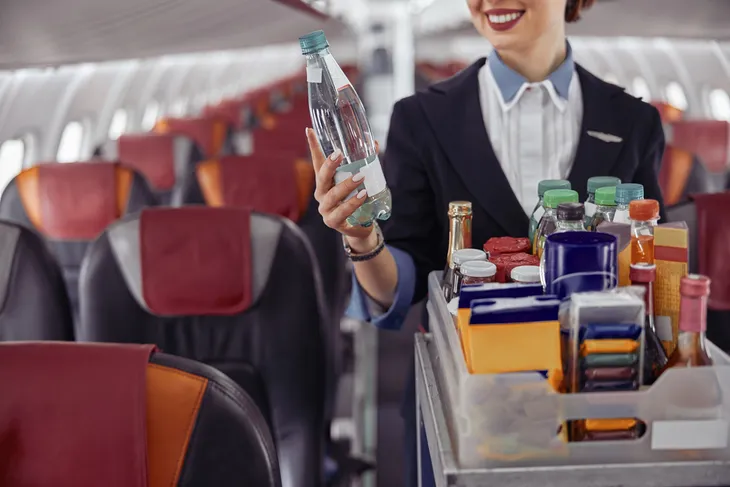 Shutterstock/Ivan Dudka
Shutterstock/Ivan DudkaGet Your Beauty Sleep
Some travelers find sleeping on flights difficult, but studies show that even short periods of sleep deprivation can have dehydrating effects on the skin. As such, sleeping during flights can help reduce issues such as poor elasticity, wrinkles and flakiness.
To promote good sleep during flights, reduce light exposure by closing window shades or shutting off overhead lights. Avoid looking at your blue light-emitting devices, such as your phone or laptop, and use an eye mask to block out any other light. Melatonin supplements can also help you fall asleep and get quality rest.
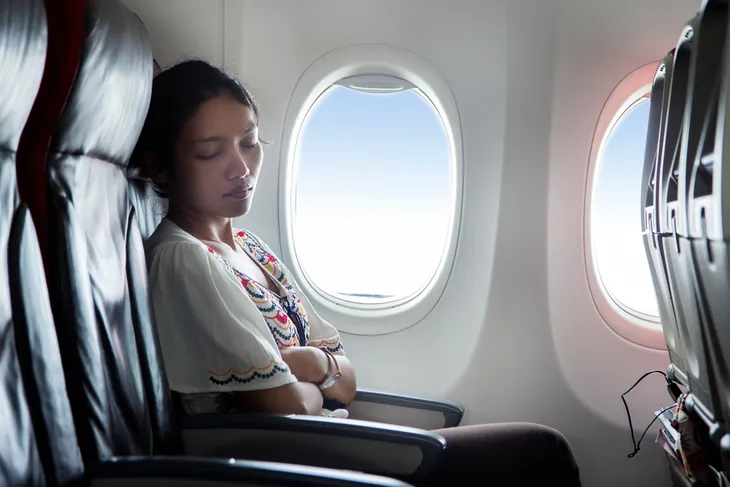 Shutterstock/Milkovasa
Shutterstock/MilkovasaDe-stress and Relax
Between flying fears, cramped cabins and chaotic terminals, air travel can create stress and anxiety for many people. In turn, excessive stress can release hormones that may trigger and antagonize inflammatory skin issues, such as psoriasis, dermatitis and acne.
To relax and de-stress, take advantage of in-flight entertainment, or bring relaxing books and music. Avoid alcohol, and sip on herbal teas with calming ingredients, such as chamomile and peppermint, instead. If you struggle with extra anxiety, breathing exercises or meditation can help manage stress and improve your mood.
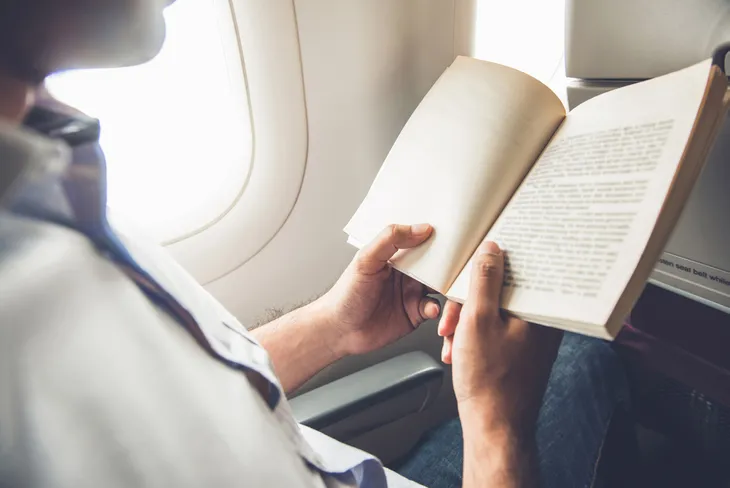 Shutterstock/Atstock Productions
Shutterstock/Atstock ProductionsStretch and Move
To help offset blood flow issues that can happen at high altitudes and consequent puffiness, try to move and stretch during your flight. Avoid sitting in awkward positions that cut off blood flow, such as with your legs or arms crossed. Do a few laps up and down the aisles every hour to promote circulation, or try a few stretches from your seat if turbulence is an issue or you’re unable to walk around.
Get some light exercise after your flight, even if it’s just a brisk walk through the airport. Light movement can help to mobilize extra water retained after spending time in a pressurized aircraft cabin.
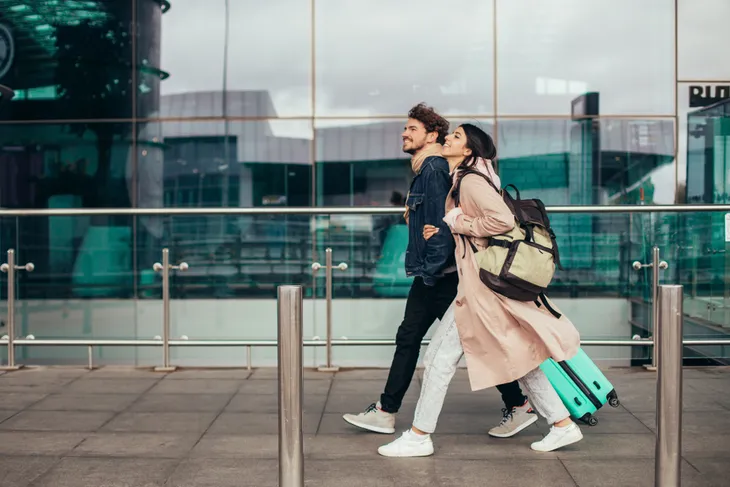 Shutterstock/Anton Mukhin
Shutterstock/Anton MukhinClean and Sanitize
Although airplane air is heavily filtered, a cabin of travelers is bound to carry plenty of bacteria. Most people touch their face unconsciously and inadvertently transfer bacteria from other places their hands have touched to their skin. To avoid transferring bacteria to your face, sanitize your seat with an antibacterial wipe when you board the plane, and sanitize your hands regularly throughout the flight.
After you’ve arrived at your destination, wash the clothes you wore during travel, and sanitize any items you used during the flight, such as your phone, laptop or neck pillows.
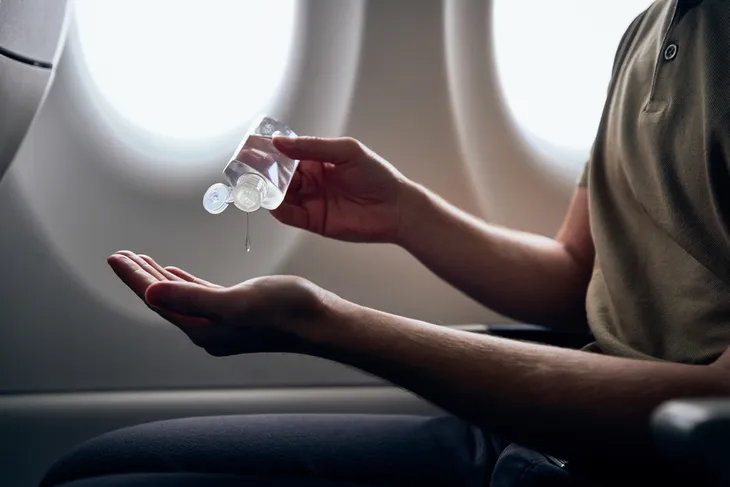 Shutterstock/Jaromir Chalabala
Shutterstock/Jaromir ChalabalaPostflight Cleanse and Exfoliate
Once you arrive at your destination, your skin-care routine should focus on reintroducing moisture and preventing breakouts. Double cleanse your skin with a gentle cleanser to get rid of any dirt or bacteria picked up during the flight. Cleansers or spot treatments with salicylic acid can be extra effective if you’re prone to acne or breakouts.
Although many people prioritize a hot shower after travel, washing your skin in hot water can strip it of its natural oils and cause dryness and aggravation. Instead, opt for a lukewarm shower during your post-flight cleansing routine.
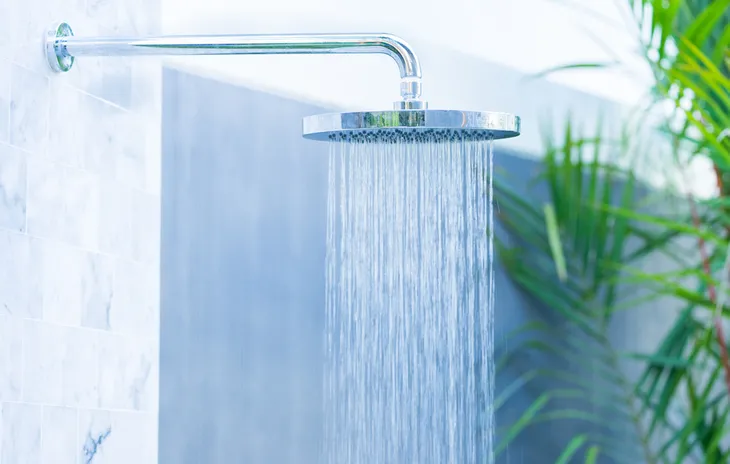 Shutterstock/MIA Studio
Shutterstock/MIA StudioBrighten and Rehydrate
Although it may not be obvious, dry skin and cells can build up on your skin during flight and cause your complexion to appear dull. Follow cleansing with a gentle chemical exfoliator that contains AHAs and BHAs, such as:
- The Ordinary Glycolic Acid 7% Toning Solution
- Go-To Exfoliating Swipeys
- Paula’s Choice Skin Perfecting 2% BHA Liquid
After exfoliating, brighten and nourish your skin with a vitamin C serum and hyaluronic acid moisturizer. Eye creams containing caffeine can help reduce eye puffiness, or you can apply a cold pack or towel to the skin around your eyes.
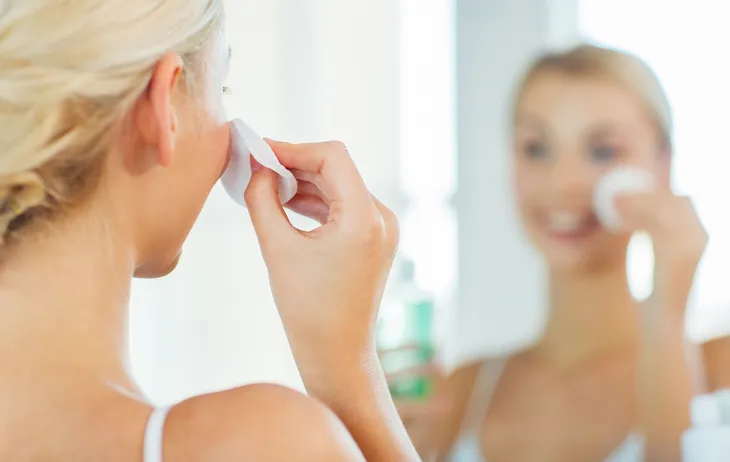 Shutterstock/Ground Picture
Shutterstock/Ground Picture